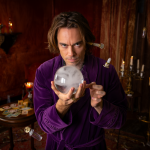Market Behavior: Fight the Trend and Lose, Follow It and Win
Oct 24, 2024
Introduction
What if the smartest investors fail not because they know too little but because they know too much?” This paradox challenges the very foundation of traditional investing wisdom. It suggests an information overload can cloud judgment, leading even the most seasoned investors astray. Consider the Titanic of financial disasters—the 2008 housing market crash. Armed with data and confidence, wealthy investors rode the wave of euphoria straight into oblivion. They clung to their beliefs, ignoring the wave’s crest signalling the impending fall.
The annals of history are replete with such cautionary tales. Take the South Sea Bubble of the 18th century—a time when seasoned merchants and noblemen alike were swept up in a frenzy of speculation. The allure of quick riches blinded them to the unsustainable ascent of asset prices. When the bubble burst, fortunes evaporated overnight. These episodes underscore a critical truth: understanding market behaviour isn’t just about numbers and charts; it’s about deciphering the subtle currents of mass psychology that drive market trends.
Uncertainty, often mistaken for fear or greed, is the true puppeteer of market movements. The whisper in the back of an investor’s mind says, “What if I’m wrong?” This doubt can paralyze decision-making or, worse, compel irrational actions. Recognizing and embracing uncertainty, rather than fighting against it, is the first step toward mastering market dynamics.
Psychology and Strategy Collide
Niccolò Machiavelli once wrote, “Everyone sees what you appear to be; few experience what you are.” This insight into human nature is profoundly applicable to market behavior. The facades of confidence and certainty that pervade financial markets often mask the underlying unpredictability of human behaviour. Sigmund Freud delved into the unconscious motivations that drive us, suggesting that our actions are often governed by forces beyond rational comprehension.
In the midst of chaos, there is also opportunity.” – Sun Tzu, The Art of War
Sun Tzu’s wisdom applies to the battlefield and the financial arena, where chaos and uncertainty are ever-present. The markets, like warfare, are a domain of constant flux and strategic manoeuvring. Sun Tzu emphasizes the importance of adaptability and seizing opportunities during turbulent times.
Consider the impact of black swan events, rare and unforeseen occurrences that deviate significantly from the norm. These events, akin to the element of surprise in military strategy, can disproportionately impact financial systems. The 2008 global financial crisis and the COVID-19 pandemic are prime examples of black swan events that upended markets and challenged traditional investment strategies.
Consider the phenomenon of collective euphoria—the adrenaline-fueled ascent where markets defy gravity. This is the apex where strategy and psychology collide. Just as empires rise and fall, so too do markets succumb to the cyclical nature of human behaviour. Recognizing these patterns allows investors to anticipate shifts rather than react to them. It’s an art form, a dance between contrarian thinking and strategic action.
One such strategy involves selling options on blue-chip stocks after a market crash. When panic grips the masses, option premiums soar, presenting an opportunity to collect significant income. Reinvesting some of these premiums into call options can create a leveraged position with limited downside—an elegant way to harness volatility rather than fear it. This approach turns the tables on traditional investing by capitalizing on the emotions that unnerve most investors.
Historical Wisdom Meets Modern Markets
The ancient Chinese philosopher Laozi taught, “Those who have knowledge, don’t predict. Those who predict don’t know.” This wisdom emphasizes the futility of trying to forecast markets with absolute certainty. Instead, it advocates for a harmonious understanding of natural cycles—a principle that applies seamlessly to financial markets.
Confucius added another layer by advising, “To see what is right and not do it is a lack of courage.” Investing means recognizing opportunities that arise from market downturns and having the fortitude to act upon them. Sir John Templeton famously said, “The time of maximum pessimism is the best time to buy.” Templeton’s success during the Great Depression and subsequent bear markets was no accident; it resulted from understanding that panic selling creates undervalued opportunities.
But let’s delve into lesser-known figures like Marcus Licinius Crassus, one of Rome’s wealthiest men. Crassus made his fortune by purchasing properties at fire-sale prices—sometimes literally during fires he allegedly started. While his methods were ethically dubious, the underlying strategy of seizing opportunities amidst chaos is instructive. Similarly, Nathan Mayer Rothschild capitalized on the uncertainty following the Battle of Waterloo by buying heavily when others hesitated, amassing immense wealth.
Modern investors like Stanley Druckenmiller and Paul Tudor Jones embody this historical wisdom and contemporary strategy blend. They recognize that mastering markets requires more than technical prowess; it demands an acute understanding of human behaviour across time. Their successes are testaments to the power of synthesizing timeless principles with modern analytics.
Unmasking Market Illusions: Philosophy, Sociology, and Satire
Mark Twain wryly observed, “Whenever you find yourself on the side of the majority, it is time to pause and reflect.” This nugget of satire unveils a profound investment strategy: scepticism of herd behaviour. Sociology tells us that groupthink can lead to suboptimal decisions, as individuals forego personal judgment in favour of consensus. Markets, aggregations of human choices, are especially susceptible to these dynamics.
Philosopher Arthur Schopenhauer posited that all truth passes through three stages: ridicule, opposition, and acceptance. In investing, unconventional strategies are often dismissed or criticized until their efficacy becomes undeniable. Embracing this progression allows investors to position themselves ahead of the curve.
Imagine blending Twain’s wit with the calculated strategies of hedge fund managers. The result is a perspective that questions norms and seeks value where others see none. It’s like finding a gem in a heap of coal. This lens strips away the illusions perpetuated by market hype, revealing underlying opportunities that those fixated on popular trends overlook.
Consider Taleb’s concept of anti-fragility. Like certain investment strategies, systems that gain from disorder thrive amidst volatility. This contradicts the conventional aversion to market turbulence. By adopting an anti-fragile mindset, investors can reframe volatility from a threat into an ally.
Timing and Emotions in Focus
They say timing is everything. But in markets, timing isn’t just about clocks and calendars; it’s about psychological readiness. Technical analysis provides indicators—like moving averages and relative strength indexes—that signal potential market movements. Yet, technical signals can be misleading without understanding the emotional currents that drive these movements.
Fear, greed, and euphoria are not mere sentiments, but quantifiable forces manifest in trading volumes, price swings, and market breadth. Warren Buffett encapsulated this when he advised investors to “be fearful when others are greedy and greedy when others are fearful.” Buffett’s success is partly attributed to his ability to remain emotionally detached, making rational decisions when others are swayed by sentiment.
John Templeton’s approach during market panics was buying stocks no one else wanted. This contrarian stance requires not just analytical skills but also emotional resilience. It demands the discipline to act against prevailing sentiments, trusting in one’s assessment of intrinsic value over market noise.
Challenging the vilification of fear and euphoria, we uncover that uncertainty is the true driver of opportunity. When markets are suspended in indecision, prices often consolidate, setting the stage for significant moves once a direction is established. Savvy investors recognize these periods as breeding grounds for potential breakouts or breakdowns, positioning themselves to capitalize on the ensuing trends.
Embracing chaos, rather than retreating from it, differentiates the adept investor from the average one. It’s about standing firm when the ground seems to shake, knowing that stability is often an illusion.
The Art of Patience and the Power of Nerve
“What if the greatest investment strategy isn’t about knowing when to sell but when to hold your nerve?” This provocative question strikes at the heart of successful investing. Throughout history, the most formidable investors have been those who mastered the art of patience. They thrived not by reacting to every market twitch but by steadfastly adhering to well-considered strategies.
Take the example of Bernard Baruch, who sold out of the stock market before the 1929 crash. His decision was not based on panic but on disciplined analysis and the courage to act contrary to the crowd. Similarly, during the dot-com bubble, few had the resolve of investors like Julian Robertson, who recognized the unsustainable valuations and adjusted his positions accordingly, even at the cost of short-term losses.
These investors share a common thread: the ability to remain composed in uncertainty. They understand markets are inherently cyclical, and downturns are as natural as upswings. By accepting this reality, they avoid the pitfalls of emotional decision-making.
In today’s hyperconnected world, where information overload can trigger knee-jerk reactions, holding one’s nerve is more challenging yet critical than ever. The constant barrage of news can amplify uncertainty and create opportunities for those who maintain clarity amidst the noise.
Embracing Uncertainty: The Investor’s Greatest Ally
Uncertainty need not be an adversary. It is the very fabric from which opportunities are woven. When others see chaos, discerning investors see patterns emerging. They understand that volatility is not synonymous with risk but is a natural characteristic of dynamic markets.
By embracing uncertainty, investors align themselves with the inherent nature of markets. They accept that not all variables can be controlled or predicted. This acceptance frees them from the paralysis that uncertainty often brings. It allows for flexible strategies that can adapt to changing conditions.
History’s greatest investors, from ancient merchants to modern financiers, have all recognized this truth. They didn’t fight the tide; they learned to navigate it. They didn’t attempt to impose certainty where none existed; they developed the acuity to operate within the uncertainty.
Conclusion
So, what if investing isn’t about outsmarting the market but about outsmarting ourselves? The true challenge lies not in predicting market movements but in understanding and mastering the psychological forces within us. Markets are, after all, mirrors reflecting our collective hopes, fears, and uncertainties.
Perhaps the ultimate investment strategy is patience—holding steady when others waver, acting decisively when opportunities present themselves, and embracing uncertainty as a companion rather than a foe. By redefining our relationship with market behaviour, we protect ourselves from the folly of fighting trends and position ourselves to harness them.
In the words of Laozi, “Nature does not hurry, yet everything is accomplished.” Let us, as investors, take a cue from this timeless wisdom. Let us understand the markets instead of fighting them, and in doing so, transform uncertainty from our greatest enemy into our greatest ally.











